The Pros and Cons of Redmi Note 11 Smartphone
Xiaomi introduced the Redmi Note 11 Series as the successor to the Redmi Note 10 on the global market. Four models make up the new series: the Redmi Note 11, the Redmi Note 11s, the Redmi Note 11 Pro, and the Redmi Note 11 Pro 5G.
These smartphones share a similar design with a flat frame, which is different from the previous generation's curved frame. Additionally, the design of the rear camera module has been modified slightly.
The Carisinyal team will look at the Redmi Note 11 in detail, focusing on the most basic model in the series.
Before diving into the main topic, please check the table below for further information about the device's pros and cons.
Pros of the Redmi Note 11
The Redmi Note 11 offers a number of perks that make it a good choice for the affordable mid-range market. What are these advantages?
1. Impressive Build Quality and Design
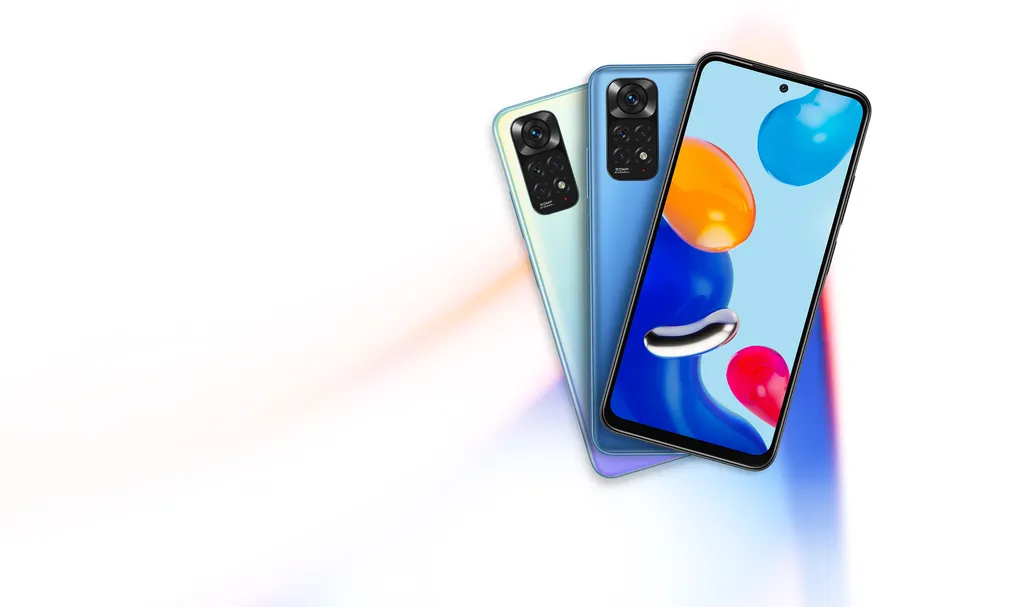
The Redmi Note 11, along with the other models in the series, features a flat frame, which some consider to be more sophisticated and elegant.
However, this design choice might not be as comfortable as a curved frame and may create the impression that the phone is thicker. It's important to note that design preferences are subjective, and consumers' opinions may vary.
Many reviewers have praised the Redmi Note 11's design, including Shruti Dhapola from The Indian Express and Jon Mundy from Tech Advisor, who both found the phone comfortable to hold. The device's dimensions are 159.87 x 73.87 x 8.09 mm, and it weighs only 179 grams, making it quite thin and lightweight.
Eric Zeman of Android Authority praised the Redmi Note 11's build quality but pointed out that even the matte-finished Graphite Gray model's back cover is prone to fingerprint smudges. Shruti Dhapola experienced the same issue with the Star Blue test unit variant.
The body of the Redmi Note 11 is made of polycarbonate, and its front is protected by Gorilla Glass 3. IP53 certification indicates that the phone is resistant to dust and water splashes.
2. 90 Hz AMOLED Screen

The Redmi Note 11 retains the AMOLED display panel from its predecessor, which measures 6.43 inches and features Full HD+ (1080 x 2400 pixels; 409 ppi) resolution.
AMOLED panels are more popular than IPS LCDs due to their more accurate color reproduction and faster response times. The AMOLED display on the Redmi Note 11 also supports a high refresh rate of 90 Hz, allowing users to smoothly scroll through social media applications. Xiaomi claims that this smartphone's screen has a touch sampling rate of 180 Hz, which is quite high.
The Redmi Note 11's screen performs well outdoors, boasting a brightness level of 700 nits in high brightness mode and 1000 nits in automatic brightness mode.
The screen is also said to cover the wide DCI-P3 color range, which Jon Mundy confirmed with an i1Display Studio color calibration tool. The results showed 99.9% DCI-P3, 100% sRGB, and 87.8% Adobe RGB color accuracy.
However, it's worth noting that the Redmi Note 11's AMOLED display does not yet support HDR10+ content playback, though it does have Widevine L1 certification, allowing users to watch Netflix movies in Full HD resolution.
3. Efficient Chipset, Provides Stable Performance

The Redmi Note 11 uses Qualcomm's new Snapdragon 680 system-on-chip, which is comparable to the Snapdragon 662 found in the Redmi 9T and POCO M3.
However, the Snapdragon 680 features a more advanced 6 nm fabrication process, resulting in more stable performance and cooler temperatures. Let's examine the Snapdragon 680's profile briefly before looking into its performance.
This SoC includes eight CPU cores, with the first four being a Kryo 265 Gold (2.4 GHz) performance cluster based on the Cortex-A73 and the latter four being a Kryo 265 Silver (1.9 GHz) efficiency cluster with the native Cortex-A53 architecture.
The Snapdragon 680 features an Adreno 610 GPU, a Hexagon 686 DSP, a Spectra 346 ISP, and an X11 LTE 4G modem. It's compatible with LPDDR4X RAM.
The Redmi Note 11 comes in several configurations, including units with 4 GB RAM and 128 GB storage, and one with 6 GB RAM and 128 GB storage.
Now, let's discuss the Redmi Note 11's performance with the Snapdragon 680. Tech reviewers found that the device can handle various daily tasks smoothly.
However, David Nield from Tech Radar reported that its synthetic benchmark scores on GeekBench 5 were not particularly impressive, with a single-core score of 377 and a multi-core score of 1625, respectively.
The graphics capability score is 377, with an average frame rate of 2.7 FPS, obtained from testing on the 3DMark Wild Life Unlimited application by Darragh Murphy from Laptop Mag.
According to Murphy, playing Call of Duty Mobile is possible on the Redmi Note 11, especially when you use medium graphics settings and a medium frame rate. However, you shouldn't expect smooth performance when playing Genshin Impact on high graphics settings.
4. Decent Camera with Reasonable Features

The Redmi Note 11 boasts a quad-camera setup on the rear. The primary camera is a 50 MP sensor with an f/1.8 aperture, followed by an 8 MP ultra-wide camera with an f/2.4 aperture.
The remaining two cameras are a 2 MP macro camera and a 2 MP depth sensor with f/2.4 apertures. These specifications are similar to those of the Redmi Note 10, with the exception of a 2 MP increase in the main camera.
The front-facing camera of the Redmi Note 11 features a 13 MP sensor with an f/2.4 aperture. The device captures high-quality images, especially in bright daylight or well-lit settings.
Elements such as sharpness, color, and dynamic range are acceptable. Photos taken with the Redmi Note 11's camera can be uploaded directly to social media platforms without any changes.
However, Shruti Dhapola remarked that the colors in certain photographs may appear oversaturated. Here are some images shot using the Redmi Note 11:



5. Stereo Speaker and Audio Jack Available
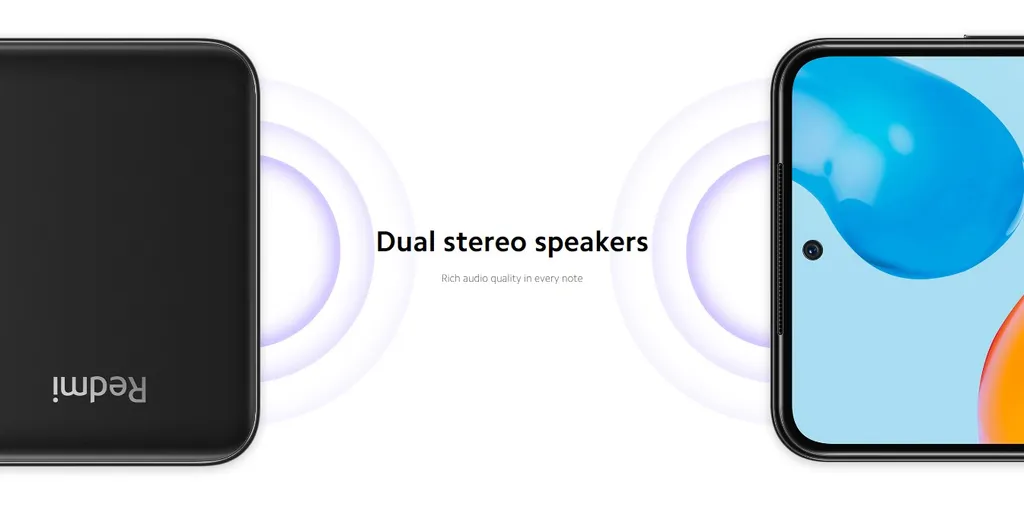
Stereo speakers have started to be adopted by affordable mid-range smartphones. This feature is no longer exclusive to high-end ones. The Redmi Note 11 also has this type of speaker with two sound outputs. The main speaker is at the bottom, while the secondary speaker is integrated with the earpiece.
According to Arel Ebana of YugaTech, the sound produced by the Redmi Note 11's speakers is loud. However, at higher volume levels, the sound becomes thin and the bass element weak. This is a common issue with affordable smartphone stereo speakers. Nonetheless, stereo speakers are capable of creating dynamic and lively audio experiences.
You can use a wired earphone if you are unhappy with the sound quality. The Redmi Note 11 has a 3.5 mm audio jack on the bottom of the device. You can listen to high-resolution audio by plugging in the earphones.
In addition to the audio jack, the Redmi Note 11 also features three slots in its SIM tray, enabling the installation of two SIM cards and one microSD card.
6. Complete Sensor Suite
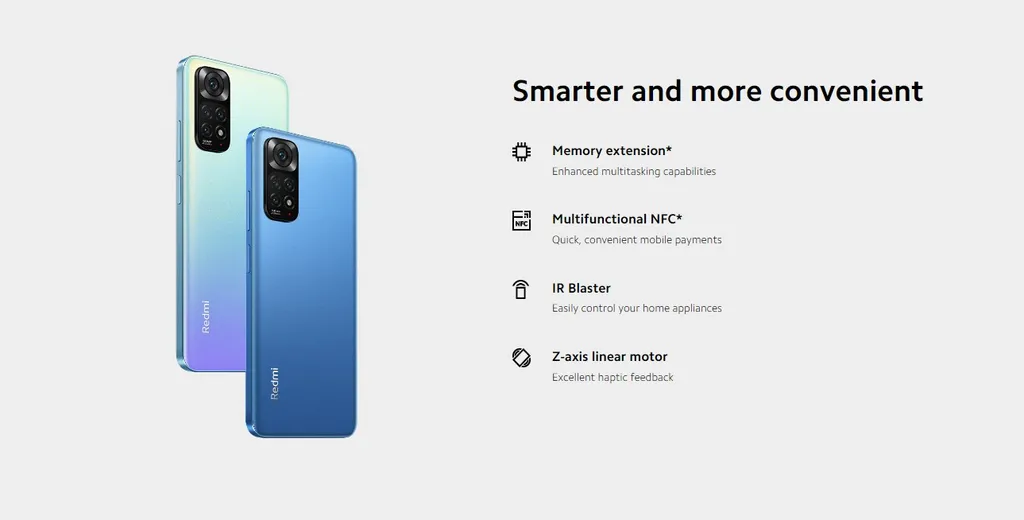
The Redmi Note 11 is equipped with a full range of sensors, including an accelerometer, proximity sensor, gyroscope, fingerprint sensor (integrated with the power button), and compass.
An infrared sensor is also present, allowing you to utilize the phone as a substitute for a TV remote, particularly when you've lost the original one.
The phone is also equipped with an ambient light sensor that enables the screen brightness to be automatically adjusted based on the surrounding lighting conditions.
7. Impressive Battery Life with Fast Charging
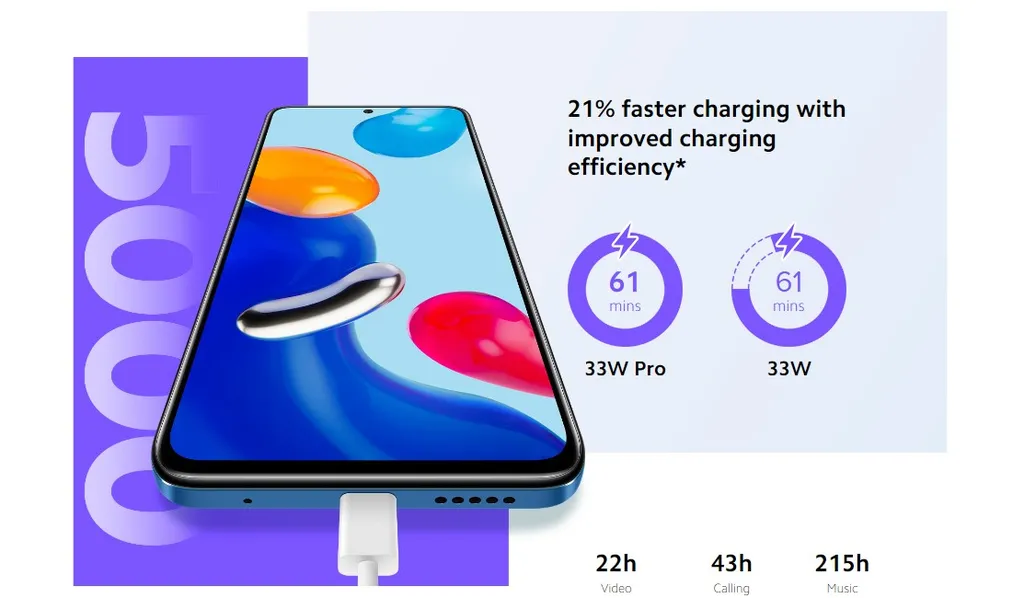
The Redmi Note 11 boasts a reliable 5000 mAh battery capacity, consistent with its predecessor, and supports 33W fast charging technology.
Tech reviewers completely praised the Redmi Note 11's incredible battery life. Jon Mundy reported a battery life of 11 hours and 35 minutes when tested with the PC Mark battery application.
Eric Zeman found that a phone with a 90-Hz screen refresh rate could last over a day. The battery life can be extended to two days when the refresh rate is reduced to a constant 60 Hz.
The device's battery charging speed is considered fast. According to Zeman's experience, the depleted battery can be fully charged within an hour.
Cons of the Redmi Note 11
The Carisinyal team will also point out some of the Redmi Note 11's drawbacks. It's important to consider the following factors before purchasing the phone, no matter how much you believe these drawbacks to be reasonable.
1. Lack of 5G Support

The Snapdragon 680 SoC utilized by the Redmi Note 11 is equipped with an X11 LTE modem, which is why it does not support 5G connectivity. The absence of 5G support is understandable for an affordable mid-range smartphone.
In addition to 4G connectivity, the Redmi Note 11 supports 5 GHz WiFi and Bluetooth 5.0. Some Redmi Note 11 models are equipped with NFC, while others are not. NFC can be useful for those who want to make transactions, check the remaining balance of e-money, or transfer files.
2. Standard Video Recording, Poor Low-Light Performance
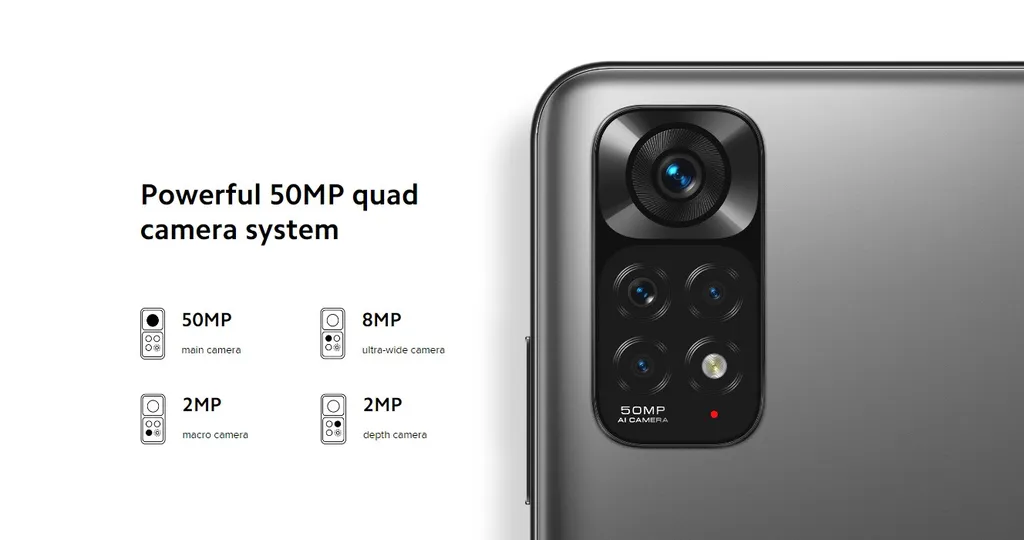
The camera of the Redmi Note 11 performs well in good-lit environments. However, it has difficulty producing high-quality images in low light and at night. Shruti Dhapola and Darragh Murphy noticed that by activating the night mode did not enhance the image quality.

Another issue with the Redmi Note 11 camera is the inability to record high-resolution videos. The main camera can only record videos in 1080p (full HD) resolution at 30 frames per second, which is down from the Redmi Note 10's 4K video recording capability. It's due to the limited capabilities of the Snapdragon 680 SoC. The front camera is only able to record 1080p videos at 30 frames per second.
According to Pratima Adhikari of GadgetByte, there's no stabilization during video recording on this smartphone, resulting in shaky footage.
3. Software Issues
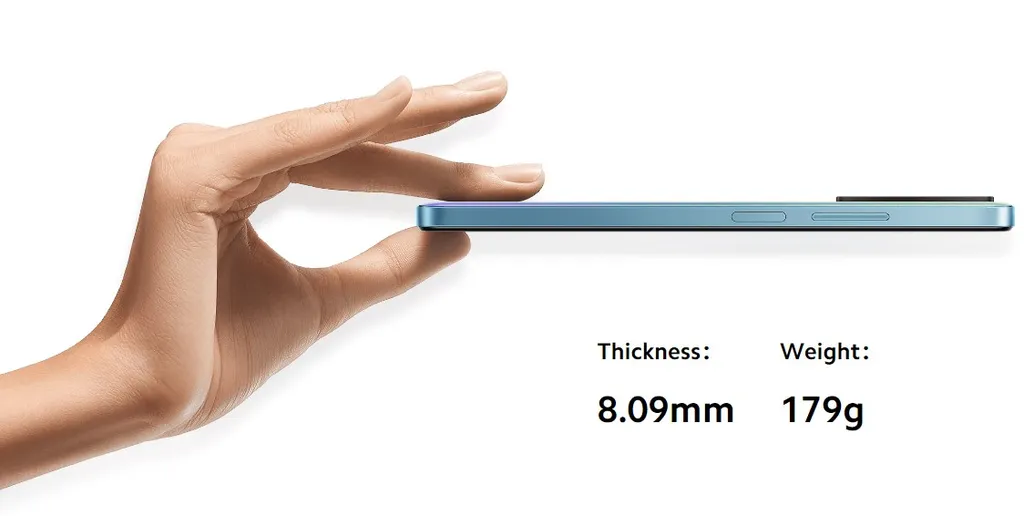
The Redmi Note 11 features Xiaomi's most recent user interface, MIUI 13. This interface, as noted by Nimish Dubey of 91 Mobiles, is clean, user-friendly, and relatively simple to navigate.
A lot of bloatware or pre-installed apps can be removed, and MIUI 13 offers a variety of features, including access to favorite apps with a single tap.
However, the interface still runs on Android 11, despite the release of Android 12. Usually, Redmi smartphones receive two interface updates but only one Android version update. This could be a serious issue for you if you prioritize guaranteed operating system updates.
Conclusion
The Redmi Note 11's balanced performance establishes a benchmark for affordable mid-range smartphones. The Redmi Note 11 excels in a variety of applications due to its bright and smooth AMOLED display, durable battery, loud speakers, and reliable daily performance. Additionally, its design is ergonomic and aesthetically pleasing.
This phone may not be ideal for people who record videos frequently due to the limitations of its system-on-chip. However, the Redmi Note 11 produces photographs that are suitable to share on Instagram.
In conclusion, the Redmi Note 11 is an all-around smartphone that offers outstanding value for the price. It is an option for a wide range of consumers, including teens, adults, students, and professionals.
